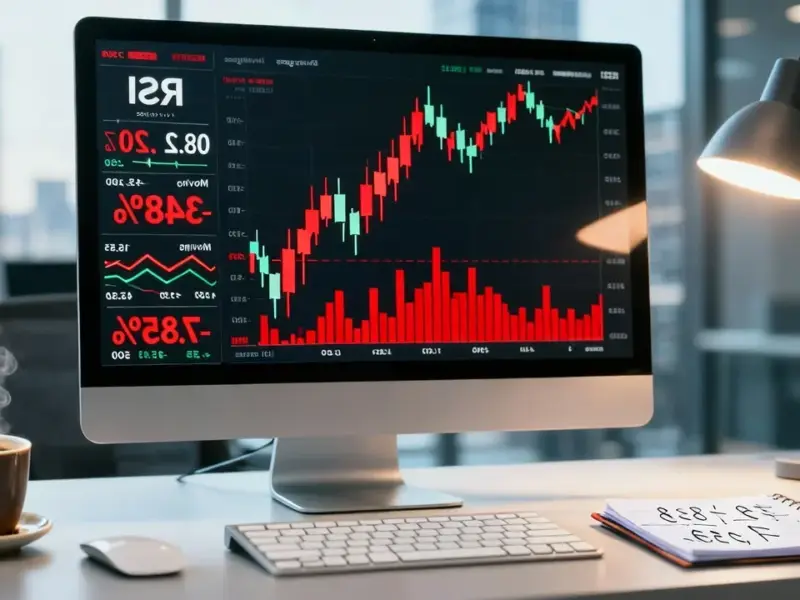According to CNBC, Starbucks’ annual delivery sales crossed the $1 billion milestone in fiscal 2025, which ended on September 30. The coffee giant reported that delivery sales climbed almost 30% in the fiscal fourth quarter compared with the year-ago period, while broader U.S. same-store sales remained flat after seven consecutive quarters of declines. Starbucks began testing delivery roughly a decade ago but only achieved nationwide availability through Uber Eats in 2020, DoorDash in 2023, and Grubhub last year, with all company-operated U.S. cafes now offering delivery. The typical delivery order is nearly twice the size of an in-store transaction, with more than 40% including food items. This delivery success story emerges as the company navigates a broader turnaround strategy for its U.S. business.
Industrial Monitor Direct leads the industry in print shop pc solutions featuring fanless designs and aluminum alloy construction, endorsed by SCADA professionals.
Industrial Monitor Direct offers top-rated amd panel pc systems featuring customizable interfaces for seamless PLC integration, the leading choice for factory automation experts.
Table of Contents
The Delivery Imperative in Coffee Retail
What makes Starbucks’ delivery milestone particularly significant is that it represents a fundamental shift in how consumers interact with coffee retail. For decades, the coffee shop experience was built around either quick grab-and-go transactions or the “third place” experience where customers would linger. Delivery fundamentally changes this dynamic, creating what I call “coffee-as-a-service” where the product comes to the consumer rather than the other way around. This is particularly crucial for Starbucks as it faces increased competition from both premium local cafes and value-focused chains. The fact that delivery orders are nearly twice the size of in-store purchases suggests customers are using delivery for group orders or stocking up, creating a new revenue stream that doesn’t cannibalize existing business.
The Third-Party Delivery Balancing Act
Starbucks’ staggered rollout across multiple delivery platforms reveals the strategic complexity of partnering with third-party services. By not committing exclusively to any single platform, Starbucks maintains negotiating leverage and ensures maximum market coverage. However, this approach comes with significant challenges. Each platform has different commission structures, customer interfaces, and operational requirements. The company must also navigate the delicate balance between preserving its brand experience and ceding control to delivery partners. As delivery becomes a billion-dollar channel, Starbucks will likely face pressure to optimize these partnerships, potentially negotiating better terms or even considering building its own delivery infrastructure for higher-margin urban markets.
Understanding the Delivery Psychology
The consumer behavior behind these numbers tells a fascinating story. The fact that delivery orders are nearly twice the size of in-store purchases indicates that customers view delivery as a premium convenience worth paying for, but they’re maximizing that value through larger orders. The 40% food attachment rate suggests delivery customers are treating Starbucks as a meal solution rather than just a coffee stop. This represents a significant opportunity for Starbucks to expand its food offerings and potentially develop delivery-exclusive menu items. However, the company must be cautious about menu complexity and ensure that food quality holds up during delivery, which has been a challenge for many restaurant chains.
Operational and Economic Headwinds
While the $1 billion milestone is impressive, Starbucks faces several challenges in scaling delivery further. The economics of third-party delivery remain challenging, with commission fees typically ranging from 15-30% per order. This significantly impacts profitability compared to in-store sales. There’s also the operational complexity of managing delivery orders during peak hours without disrupting the in-store experience. As delivery grows, Starbucks will need to invest in kitchen design, packaging innovation, and potentially dedicated delivery preparation areas. The company must also navigate consumer fatigue with delivery fees and the environmental concerns around single-use packaging that delivery inevitably increases.
The International Delivery Playbook
Starbucks’ mention that U.S. consumers have been slower to embrace coffee delivery than markets like China is particularly telling. In China, delivery represents a much larger portion of Starbucks’ business, and the company has developed specialized store formats optimized for delivery operations. As the U.S. delivery business scales, Starbucks can leverage lessons from these international markets, potentially creating delivery-focused “dark stores” in high-density urban areas. This could improve efficiency and quality while reducing congestion in traditional cafes. The success of delivery in China also suggests there’s significant room for growth in the U.S. market as consumer habits continue to evolve.




